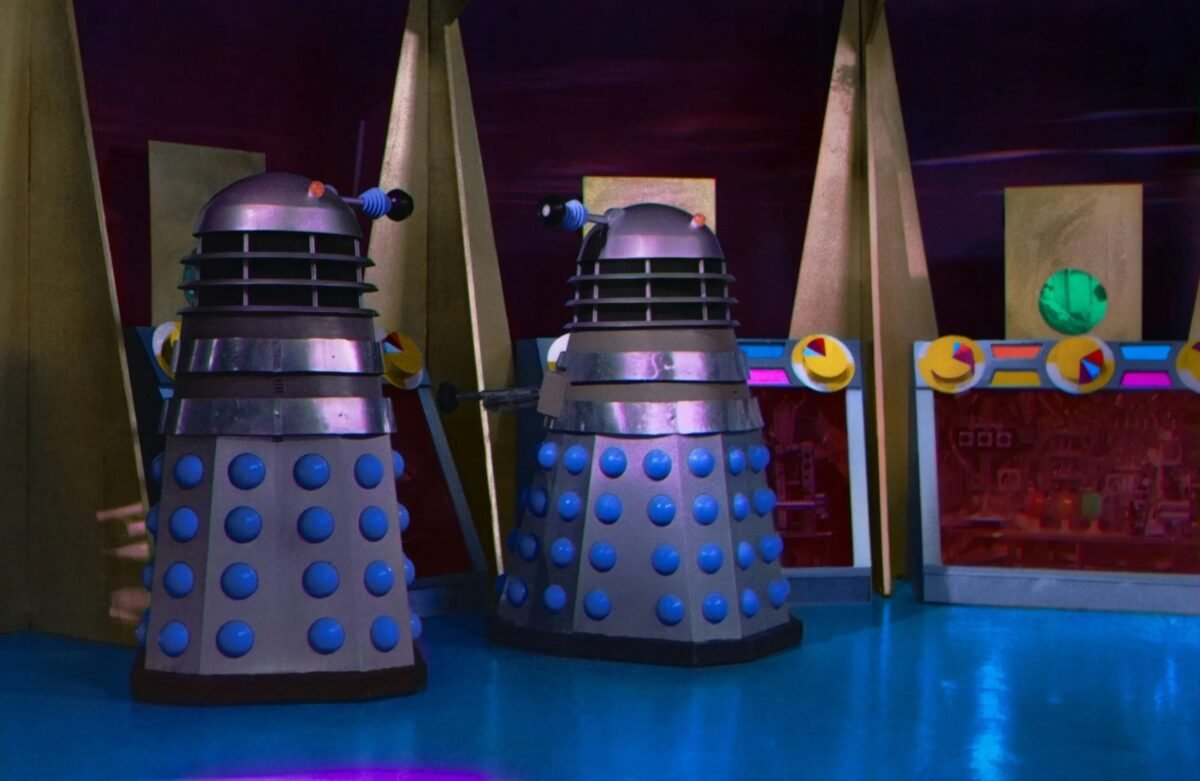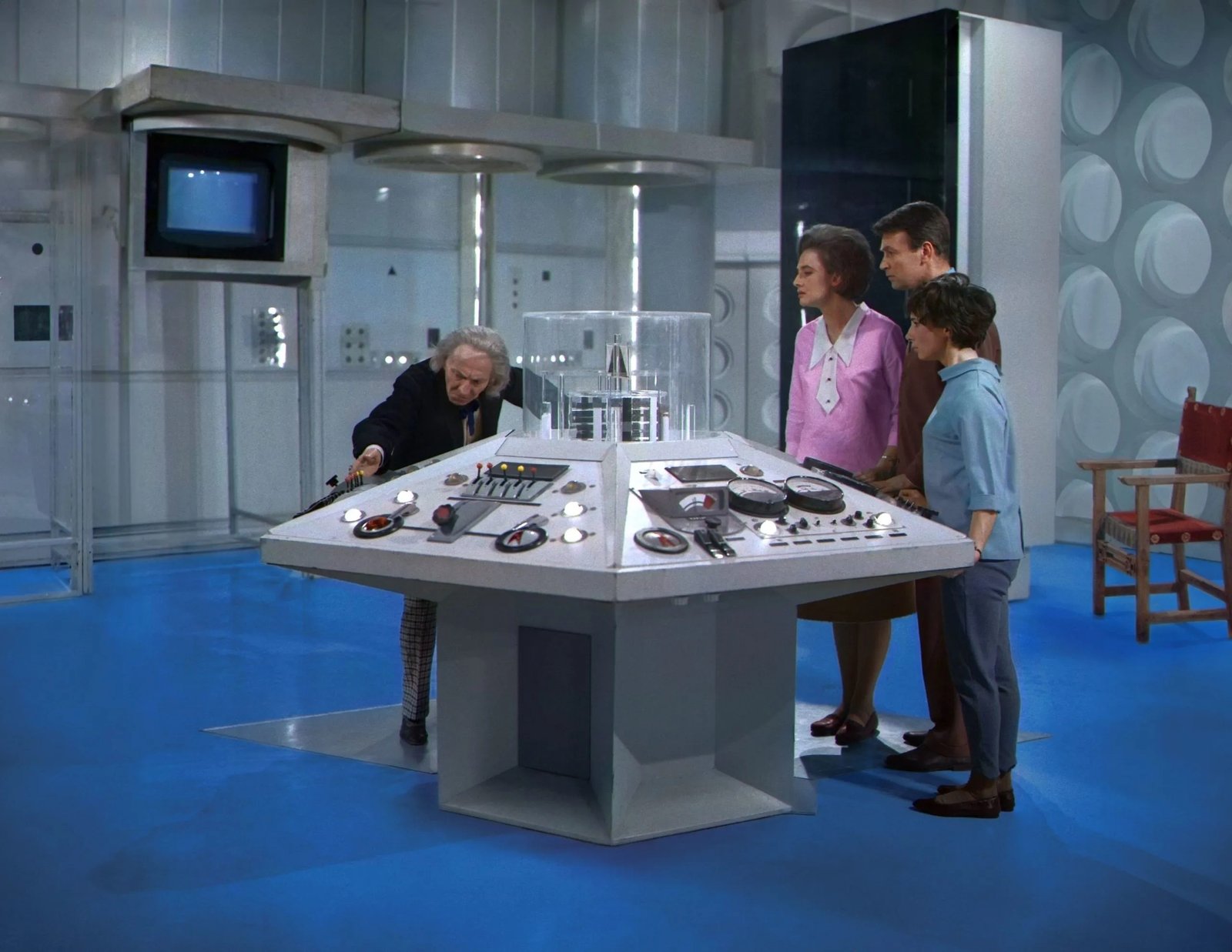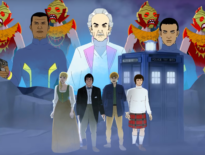It’s been a good couple of years for The Daleks, as I think we should probably agree to call it now. We’ve had a beautifully illustrated edition of David Whitaker’s novel, a cinema re-release of the movie version, and (for UK viewers at least) the opportunity to watch the story on BBC iPlayer. And now, on the very day of the programme’s 60th anniversary, this brand new colourised omnibus. How wonderful that, all these years after its first broadcast, what is arguably the most important story in Doctor Who’s long history should still attract this kind of care and attention.
When it was first announced, I wrongly assumed this would be along the lines of those feature-length versions of stories that would be shown, often over Christmas, in the 1970s (and which are now frequently included on the Blu-ray classic series box sets). It was a huge treat in those pre-home video years to enjoy the likes of The Green Death and Genesis of the Daleks again. But that was to vastly underestimate the ambition of video editor Benjamin Cook, who didn’t so much cut the episodes together as strip them down to their individual parts and reassemble them from a whole new set of plans.
Russell T Davies said in this month’s Doctor Who Magazine that the editing would prove to be more controversial than the colouring, and he was probably right. The tale now rattles along at a relentless pace, with the swift cutting we’re all used to in the modern era but would have been unthinkable when the story was made. I found myself laughing at the production team’s gall in coming up with such a wholesale reimagining, though it surely won’t have been to everyone’s taste.
It’s a shame that there wasn’t room for the Magnedon, Doctor Who’s very first alien creature, and some moments of character and charm that weren’t strictly necessary to the story, such as the food machine sequence, were sacrificed. I could have done without retconning touches like the cloister bell and mention of Kaleds, but I will allow that most people watching would have expected to hear ‘EXTERMINATE!’ a few times, even if viewers of the original didn’t. I rather liked some of the more audacious touches, such as the Daleks cunningly writing Susan’s note, though I wish there’d been room for a new scene where a Dalek clutches a marker pen as another one criticises its handwriting.

When the Daleks made it on to the big screen in the 1960s, the posters promised it was a chance to see them IN COLOUR. It was a message the team behind this colourisation seemed to have taken to heart, because boy, was this colourful. Barbara’s blouse was so vibrant a shade of pink it’s a wonder the first Dalek to appear in the series wasn’t blinded, and I couldn’t take my eyes off those vivid yellow and red dials on the control panels. Colourisation technology has clearly come a long way since those early 1980s efforts, but I don’t think it’s unfair to say it’s not yet at the point where anyone watching this would think it was filmed in colour.
But what an achievement by Rich Tipple and his team, who slaved for hours using techniques which, though assisted by software, still largely have to be done manually. We’re used to seeing colour photos of 1960s silver and blue Daleks, but it was glorious to see them moving and interacting, and of course exterminating, here.
At the conclusion, we got a tantalising glimpse of The Keys of Marinus, The Web Planet, and lots of other 1960s stories in colour, including The Beatles’ Top of the Pops appearance. Can they really be planning to do them all? I’ll certainly be watching if they do, as well as looking forward to RTD going on The One Show to promote, say, the 68th anniversary armed with the colourised version of The Gunfighters.
Although full credit must go to those behind The Daleks in Colour, the final tributes have to be paid to the cast and crew of the original, who against all the odds, in the face of low expectations and working in the most unfavourable conditions, came up with a production that caught the public’s imagination in a way few programmes ever do.
For all the changes made in this new edit, it’s still possible to marvel at what they achieved. That sense of danger, that the travellers are in the most desperate peril, was never quite the same after those early stories. The mystery of just who the Doctor is, and the (wholly justified) feeling that he can’t be trusted. And of course the Daleks; menacing, calculating, and malevolent, and about to secure the programme’s future. The Daleks in Colour was a highlight of this very special month in Doctor Who history, and enabled us to enjoy this landmark story all over again.
The Daleks in Colour can be viewed on BBC iPlayer.
A DVD, Blu-ray, and limited edition steelbook will be released in February 2024.



